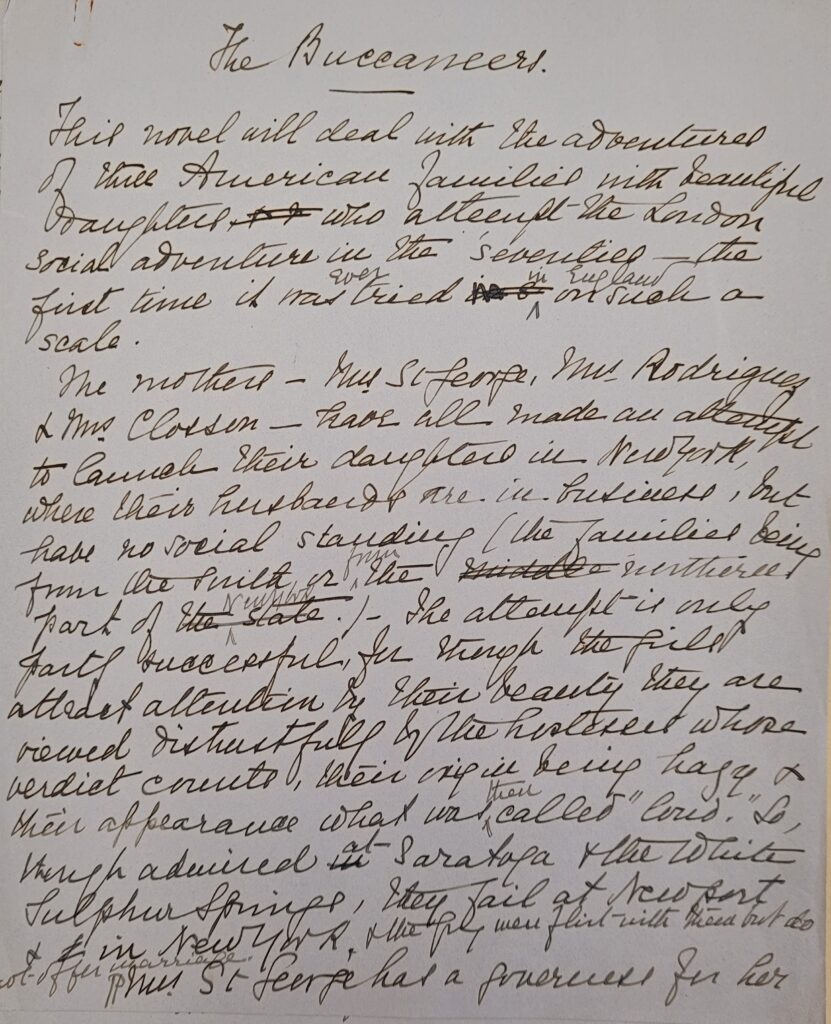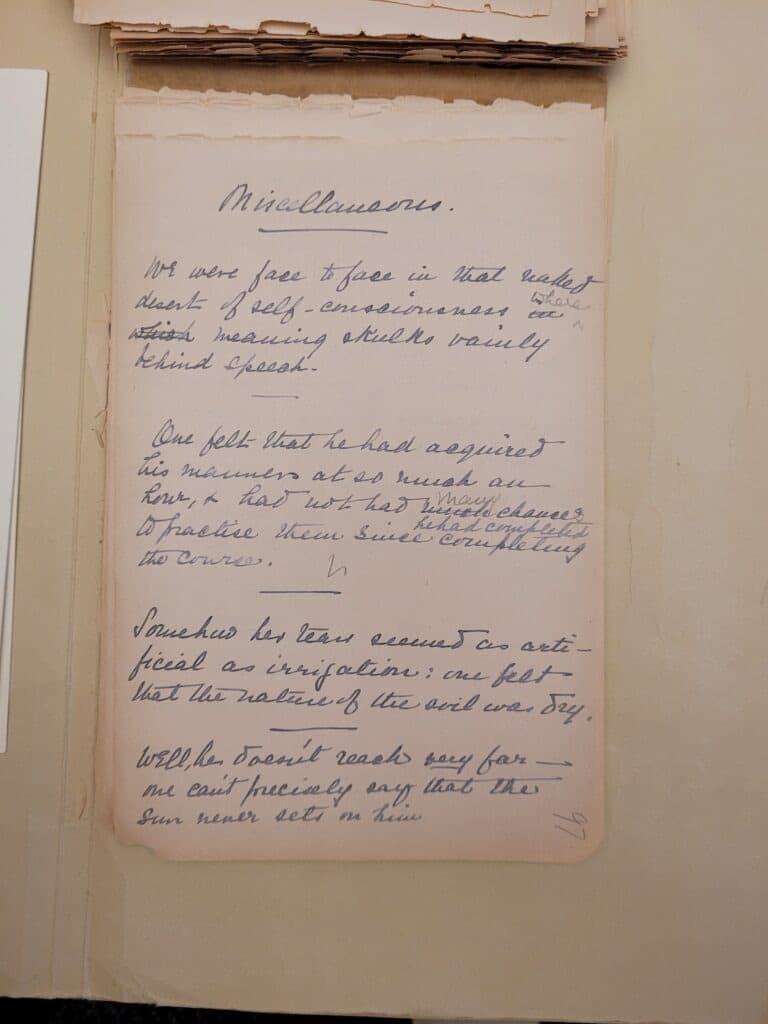
Michelle Dempsey, Curatorial Assistant
Please note, all archival material photographed is from Beinecke Library, Yale University.
If you’ve been involved with The Mount long enough, you might notice that we credit many photographs and letters to “Beinecke Library, Yale University.” The Beinecke Rare Book and Manuscript Library at Yale University houses approximately 50,000 items in their Edith Wharton Collection, making it the largest repository of Wharton-related archival material in the world. Luckily for us, New Haven is only a two-hour drive away. Since it had been years since Mount staff had visited the library, Nick Hudson (Research Assistant) and I took a road trip in March.
Expecting campus to be emptier during spring break, we were proved quite wrong, as we ended up on the fifth level of a parking garage a couple blocks from Beinecke. The day was typical for March in New England: rainy and a little chilly, but daffodils were beginning to bloom.

Walking through the drizzle, we made it to Beinecke, a building that sticks out from the more traditional architecture around it. Built in 1963, the library resembles something like an egg carton, its four walls made up of repeating oblong indentations. The second floor is dedicated to a rotating exhibition space, where we viewed not only a Gutenberg bible, but also The Canterbury Tales and Georgie O’Keefe’s recipe book, among many other fascinating items. Perhaps the most impressive feature of the building is the 180,000 items of the collection, visible on each of the six floors behind glass walls.





The reading room is located downstairs on the basement level. We checked in with the Special Collections staff and received instructions about reading room etiquette and basics of handling archival material. They handed Nick one of our requested boxes, and away we went.
The problem, albeit a good one, with such an extensive collection is the sheer amount of material available. While we had specific items we were looking for, we quickly realized that the best way to utilize our time was to simply snap a picture and move on. We were so tempted to just sit there and read. And read. But alas, we had only a few hours at our disposal. I ended up taking over 400 photos.
We perused Wharton’s outline and manuscript for her last and unfinished novel, The Buccaneers (it was the title for our last book club of 2023), in addition to other manuscripts, notebooks, and various plans and notes for her homes in France, Pavillon Colombe outside of Paris and Chateau Ste. Claire in Hyeres.





Beinecke has digitized many items that are available online at Edith Wharton Collection | Beinecke Rare Book & Manuscript Library, but it is quite a different experience to read an author’s thoughts and scribblings in their own hand, thumbing through the pages they labored over. Reading Wharton’s diaries in person made her feel more real, as she described the weather, visits with friends, her travels abroad, and the health of her beloved dogs. Detailed entries coincided with pages and pages of dates left blank, reminding me of my own attempts at journaling.

We had wished to look through three boxes (out of many more), yet each box contained folders upon folders of material, far too much for us to explore in one day. By closing time, we only made it through about half of what we requested. So, we will have to make a trip back…
